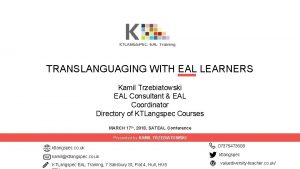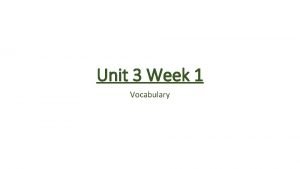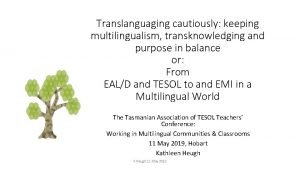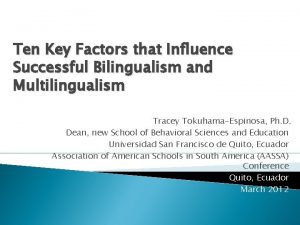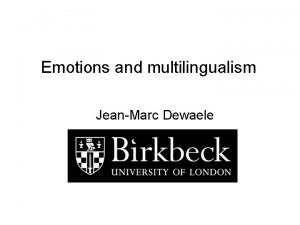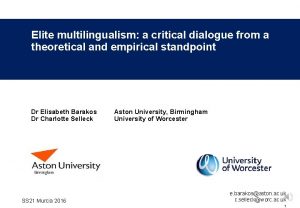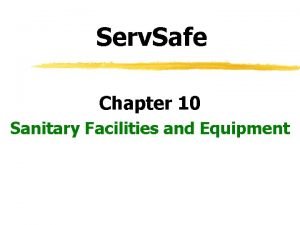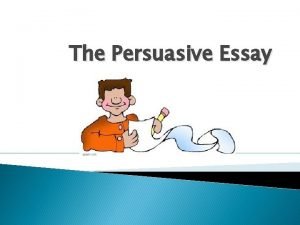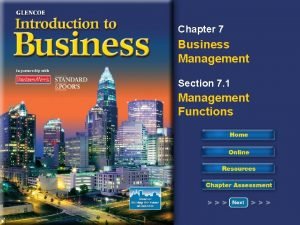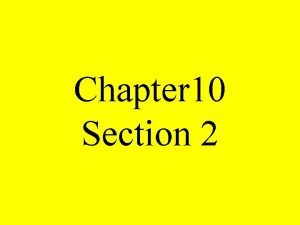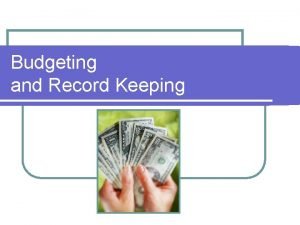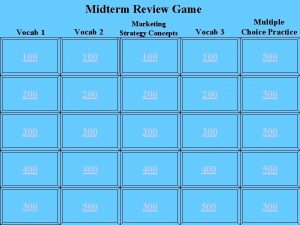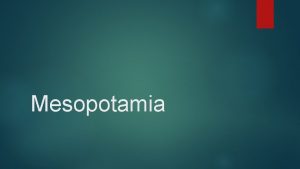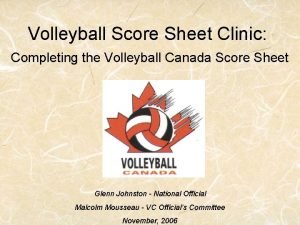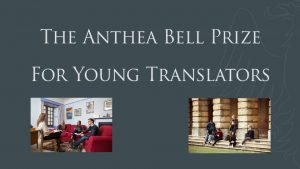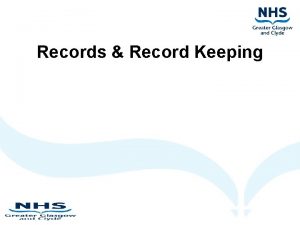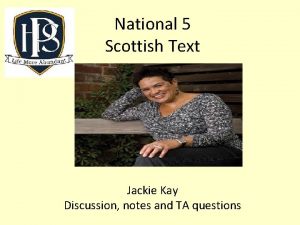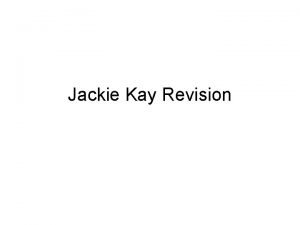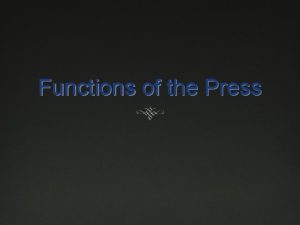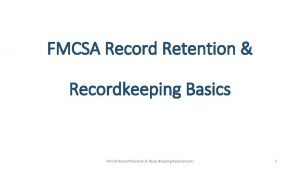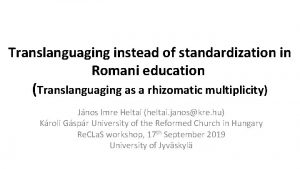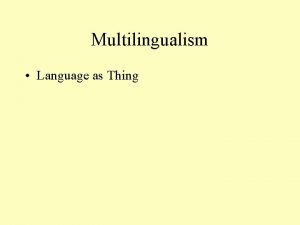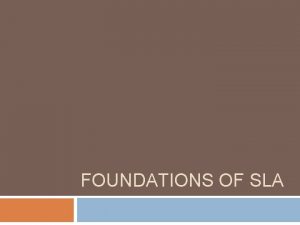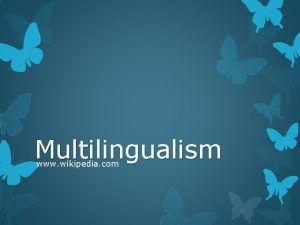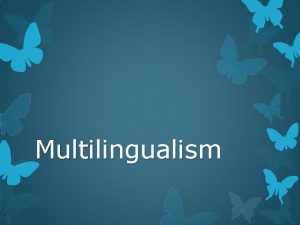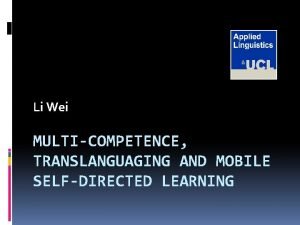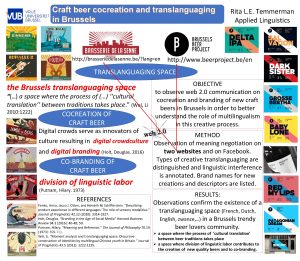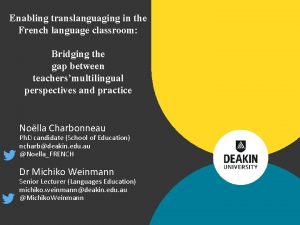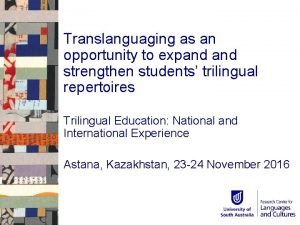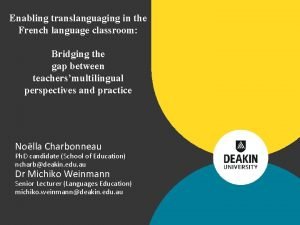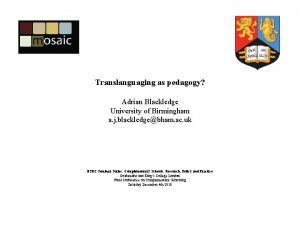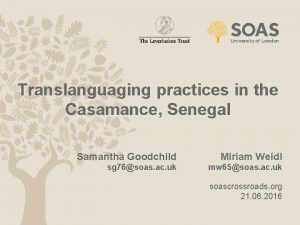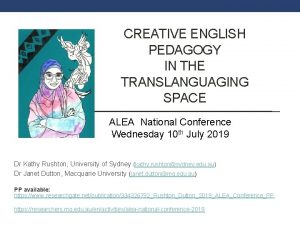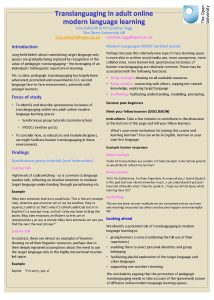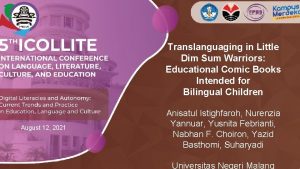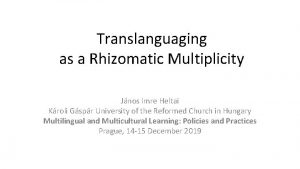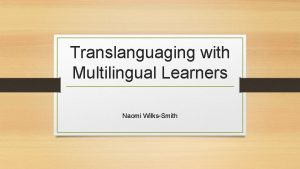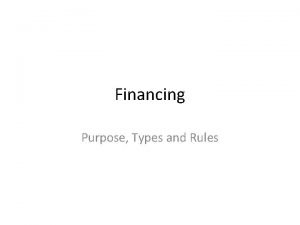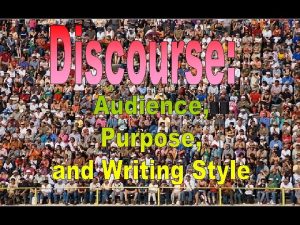Translanguaging cautiously keeping multilingualism transknowledging and purpose in

























- Slides: 25

Translanguaging cautiously: keeping multilingualism, transknowledging and purpose in balance or: From EAL/D and TESOL to and EMI in a Multilingual World The Tasmanian Association of TESOL Teachers’ Conference: Working in Multilingual Communities & Classrooms 11 May 2019, Hobart Kathleen Heugh K Heugh 11 May 2019

Outline Significant global movement of people Conflict & displacement & changing balances of power Changing foci in linguistics theory & thinking about languages & literacy in learning Implications for education systems Diversification of student profiles in classrooms & schools in most countries Professional learning / support of teachers Curriculum, pedagogy, & assessment HOWEVER Too many new terms & approaches are confusing & disempowering for teachers Applied, cognitive, educational & socio- linguists often ‘talk at cross-purposes’ - & and are not always helpful K Heugh 11 May 2019

Changing context of languages teaching, including English in Australia Changing role of languages, including English – not merely as L 2, EAL/D Shifting focus to EMI – English Medium Instruction Previously in Africa and South Asia, now also in many countries of the Asia-Pacific Students are bi-/multilingual – rather than English language poor Implications for teaching & learning • Considering what we know & understand of bilingual learners, and bilingual approaches to language teaching • Considering what we might be able to repurpose in additional languages teaching & learning, EAL/D, TESOL K Heugh 11 May 2019

From EAL/D, TESOL to EMI, Multilingualism & Transknowledging ELT plus use of L 1/linguistic repertoire (translanguaging) to increase metacognitive language learning between L 1 & L 2 Intercultural communication (IC) International knowledge exchange & expertise (IKEE) Access through students’ language & knowledge repertoires Bi-/ multilingual translanguaging approaches to ELT development + Grounded intercultural communication + Knowledge exchange Pedagogies K Heugh 11 May 2019 Translation Interpreting Code-mixing Code-switching Translanguaging Multilingualism & Transknowledging EMI & Mlgm & TK

Gaps between early literacy and academic literacy: language policy & curriculum weakness in most settings Focus on teaching literacy only Reception – Grade/Year 3 Gap between early literacy ‘Learning to read and write ’ stories and the kind of literacy needed across the curriculum ‘Reading and writing to learn’ science, mathematics, history, geography etc. from Year 4 onwards. This involves a mental (cognitive) jump for all children around the world K Heugh 11 May 2019

Gaps between early literacy and academic literacy - continued Most children change from local language(s) to English (French or Portuguese) or a dominant regional language e. g. by the end of year 3 in Africa and India. Attempts to use L 2 for teaching & learning • when learners have ± 500 -600 words, and • simple sentence structures [simple syntax] for whole curriculum • which needs ± 5000 -7000 words and • complex structures and sentences from year 4 ≠ workable. It creates a double jump for students from a minority community � The double jump � is too great. K Heugh 11 May 2019

K Heugh 11 May 2019

Common findings in relation to most language learning & reading programs Years 1 -3 Student achievement more or less similar across most reading programs Years 4 -6 Gaps begin to widen depending upon program Years 6/7+ Students in dual language (immersion) programs outperform other students K Heugh 11 May 2019

Using students’ multilinguality and intercultural knowledge to advance reading and writing • Teachers who are aware of their students’ multilinguality can turn this into powerful literacy (multi-literacy) development. • Involving children’s prior knowledge is important for: • • Building self-esteem – essential for successful learning Sharing prior knowledge increases the knowledge base of the entire class Can provide opportunities to develop both reading and writing resources Encourages cultural respect and social cohesion Déirdre Kirwan about Scoil Bhríde, Blanchardstown, Ireland • https: //www. youtube. com/watch? v=U 0 b. YHLlo. Zoo K Heugh 11 May 2019

Our challenge in increasing diversity How to: • engage students from linguistic and knowledge backgrounds that differ from the mainstream, and • how to value the expertise that they bring The core message: • teachers and students, many from marginalised communities, • need reciprocal opportunities to recognise, share and value their repertoires of language & knowledge to enhance their sense of belonging, purpose and well-being. Implications: EAL/D, TESOL English Medium of Instruction = EMI & linguistic diversity (multilingualism) are two sides of the same coin K Heugh 11 May 2019 Teachers need to know how to work with both sides of the coin

Which rules are really necessary in writing? • Keeping languages separated prevents most multilingual children from writing and speaking. • Mixing languages (code-mixing, code-switching) is normal. • If most vocabulary used in English has been borrowed and absorbed from other languages, what does this suggest to us in our teaching contexts? • Read Ekkehard Wolff on the way Ugandan children use access to different language codes to maintain social controls. K Heugh 11 May 2019

K Heugh 11 May 2019

Simple materials across the curriculum The following examples of bilingual materials – developed by a young teacher, Chandni, who works with Tribal children in a slum on the outskirts of Bhopal. Chandni, without knowing anything about bilingual education, or the need to extend literacy across the curriculum translated material from the internet into: Hindi (the dominant language) and Gondi (the Tribal language), then she laminated the pages and put them together in a spiral bound book. K Heugh 11 May 2019

K Heugh 11 May 2019

Three views of EAL/D, bi-/trilingualism in education 1. Conventional view – the vertical view of language/s as separated from one another There are clear differences between languages There are boundaries or borders between languages These are evident when we translate written text Translation between languages was a standard language pedagogy in many countries in the past • Emphasis on translation for teaching & learning has declined in many European & North American bi-/trilingual programmes. • ‘Unsystematic’ code-switching / code-mixing usually viewed as unacceptable • In contemporary programmes, two / three languages taught separately o e. g. in immersion programmes • • K Heugh 11 May 2019

Three views of EAL/D, bi-/trilingualism in education, contd. 2. Challenge to this view – a horizontal view - borders between languages are porous • • There are similarities between languages There are no clear boundaries or borders between languages People mix their (spoken) languages in real life Two / three languages can be taught alongside or together • Code-switching can be used deliberately in developing bi-/trilingualism • In Wales, deliberate use of code-switching • Part of the lesson in Welsh; switch to part of the lesson in English, and so on, has been called ‘translanguaging’ (Williams 1996; Lewis, Jones & Baker 2012) • ‘Translanguaging’ is used differently in the USA & in some other countries (e. g. García & Li Wei 2014) • Focus on the metalinguistic processes of learners using their linguistic repertoires, & bringing these into the classroom K Heugh 11 May 2019

Third View: Bringing horizontal & vertical views together 3. A Functional View • It is normal to mix languages when speaking in informal contexts • We also separate languages in academic, literary, legal, and policy documents • especially for purposes of reading and writing • We can use both vertical and horizontal dimension of language in teaching and learning • Functional trilingualism & translanguaging (Heugh, 1995; Sierens & van Avermaet 2014) K Heugh 11 May 2019

Two of the three views: vertical or horizontal Vertical Horizontal Separate Exclusive boundaries Focus on difference Bilingualism or trilingualism understood as each person’s language repertoire informal spoken contexts Code-mixing, code-switching, texting, hybrid languages (Africa & India) Translanguaging (USA, some European countries) May increase equality & social justice Co-operative, inclusive & bridging practices ‘ Bilingualism or trilingualism understood as two or three parallel monolingual systems written contexts in Education, Government, Legal systems, Literary works Formal translation, interpreting Can result in inequality & marginalisation K Heugh 11 May 2019

A functional view of multilingualism in education in Africa (Heugh 1995, 1999, 2015, 2018) Horizontal Co-operative, inclusive & bridging practices Fluid moving back & forth between languages Code-mixing, code-switching, texting, hybrid languages (Translanguaging – focus on informal processes of language use) Vertical Exclusive, bounded & practices of difference Multiple parallel monolingualisms: education, government, legal systems, literary works Formal translation & interpreting; purposive use of code-switching / translanguaging Horizontal and vertical multilingualism / translanguaging & ‘transknowledging’ / 2 -way exchange of knowledge Maximise opportunities to reduce inequalities, & maximises recognition & development of students’ linguistic & knowledge resources ‘Functional multilingual learning’ – van Avermaet et al. , 2018 K Heugh 11 May 2019

From EAL/D, TESOL to EMI, Multilingualism & Transknowledging ELT plus use of L 1/linguistic repertoire (translanguaging) to increase metacognitive language learning between L 1 & L 2 Intercultural communication (IC) International knowledge exchange & expertise (IKEE) Access through students’ language & knowledge repertoires Bi-/ multilingual translanguaging approaches to ELT development + Grounded intercultural communication + Knowledge exchange Pedagogies K Heugh 11 May 2019 Translation Interpreting Code-mixing Code-switching Translanguaging Multilingualism & Transknowledging EMI & Mlgm & TK

A translanguaging approach to teaching & learning English & developing academic literacy at an Australian university Shifting the goal from: Building academic literacy in English Principle: Value in academic knowledge available in English To: Building academic literacy in English and primary language Expanding whole linguistic repertoire Expanding principles: Value academic knowledge in English and the students’ languages & international contexts known to students Involving students, Ph. Ds, tutors & coordinator in on-going research, reflexivity, and praxis

Academic literacy - research findings & what they mean Developing academic proficiency in English takes longer than previously indicated • bilingual research indicates 6 -8 years Strong positive correlation between writing proficiency in L 1 & English r =. 736, p <. 01 Strong positive correlation between translation and proficiency in L 1 and in English r =. 643, p <. 01 Negative correlation between (weak) translation skills (L 1 to English) & achievement in English r = -. 454, p <. 05 (Heugh, Li & Song, 2017) At enrolment, most EAL students at Uni. SA • have 8 -10 years of learning English before entering university • do not have the necessary academic literacy in English Academic literacy in L 1 influences academic literacy in English • strong(er) proficiency in L 1 & strong(er) proficiency in English Students who develop metacognitive & metalinguistic expertise in translation, demonstrate increased proficiency in L 1 and English

What does this imply for teaching, learning & assessment Student awareness of: • their own linguistic repertoires academic literacy in L 1 & English • epistemological (knowledge) repertoires Student expertise • In translanguaging • translation • interpreting • code-switching • As language-knowledge brokers • in tutorials/peer learning Systematic translanguaging Formative tasks built into summative assessment • 1 task in primary language built into each assignment • Translation: L 1 to English; &/or English to L 1 Academic sources • English + 25 -30% in L 1 Reflective / research dimension Students draw on full linguistic repertoires in tutorial group work (Li, Heugh, et al 2016; Heugh, Li & Song, 2017)

Implications for Translanguaging New interest in TL may reduce student anxiety and increase confidence when used purposefully • in spoken communication • writing tasks formative assessment • drafting writing tasks for summative assessment But is unlikely to guarantee high level academic literacy achievement unless it includes • systematic use of code-switching and opportunities for translation - knowledge in one language to knowledge in another There is no reliable longitudinal evidence that (unsystematic use of) TL as fashionable in US & UK literature since 2010 serves the best interests of the majority of students in Africa, Asia, and even in the US, UK or Australia If, for strategic reasons it is useful to invoke TL, then there is reason to include 2 way translation & purposeful knowledge exchange, transknowledging. K Heugh 11 May 2019

From EAL/D, TESOL to EMI, Multilingualism & Transknowledging ELT plus use of L 1/linguistic repertoire (translanguaging) to increase metacognitive language learning between L 1 & L 2 Intercultural communication (IC) International knowledge exchange & expertise (IKEE) Access through students’ language & knowledge repertoires Bi-/ multilingual translanguaging approaches to ELT development + Grounded intercultural communication + Knowledge exchange Pedagogies K Heugh 11 May 2019 Translation Interpreting Code-mixing Code-switching Translanguaging Multilingualism & Transknowledging EMI & Mlgm & TK
 Types of societal multilingualism
Types of societal multilingualism Dual iceberg model
Dual iceberg model Acquaintance example
Acquaintance example Horizontal and vertical multilingualism
Horizontal and vertical multilingualism Factors affecting success of multilingualism
Factors affecting success of multilingualism Multilingualism meaning
Multilingualism meaning Elite dialogue
Elite dialogue In keeping equipment and facilities safe and sanitary
In keeping equipment and facilities safe and sanitary Counterargument
Counterargument Keeping an infant safe and well section 7-3
Keeping an infant safe and well section 7-3 Keeping an infant safe and well section 7-3
Keeping an infant safe and well section 7-3 Keeping the company on track and making sure goals are met
Keeping the company on track and making sure goals are met An institution for receiving, keeping and lending money
An institution for receiving, keeping and lending money Record keeping and budgeting
Record keeping and budgeting Building keeping and growing profitable value-laden
Building keeping and growing profitable value-laden Record keeping and writing
Record keeping and writing On purpose sentence
On purpose sentence General purpose specific purpose central idea
General purpose specific purpose central idea Volleyball canada score sheet
Volleyball canada score sheet Alliteration in keeping quiet
Alliteration in keeping quiet Hussain manawer does heaven have a balcony
Hussain manawer does heaven have a balcony Nmc record keeping guidance 2009
Nmc record keeping guidance 2009 Gap year poem
Gap year poem Keeping orchids poem analysis
Keeping orchids poem analysis Functions of press
Functions of press Fmcsa maintenance records
Fmcsa maintenance records

